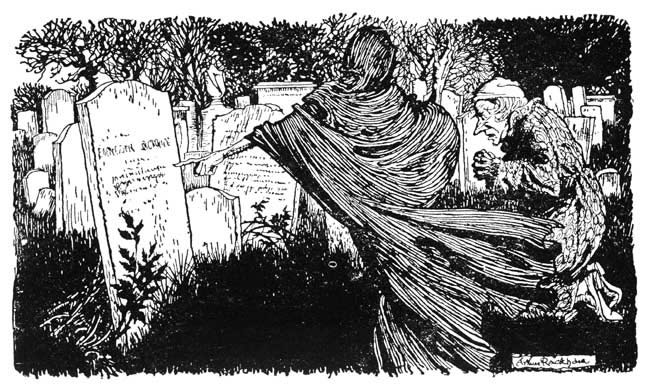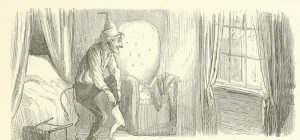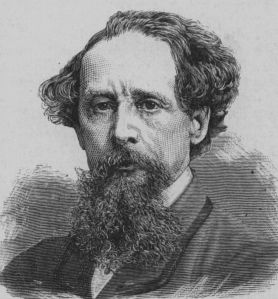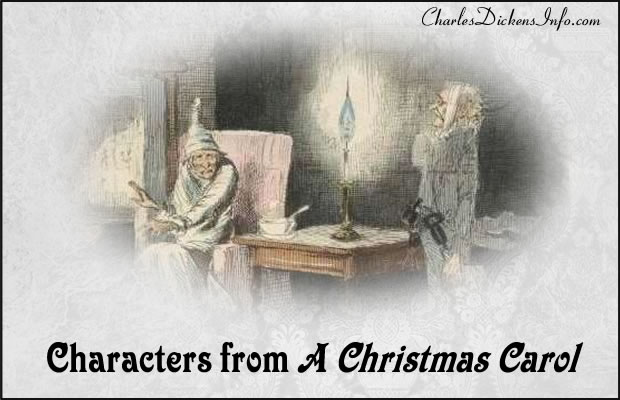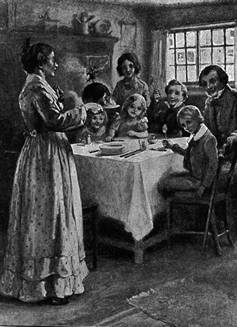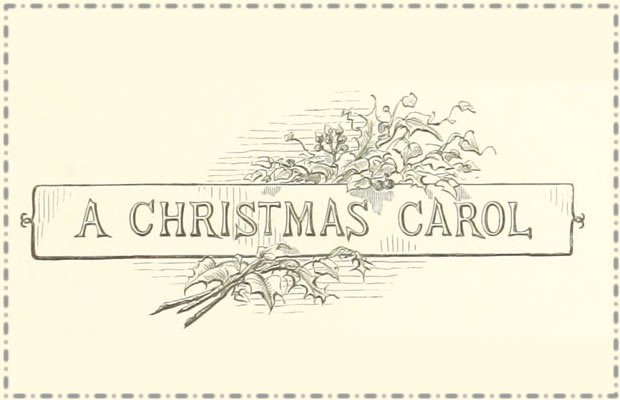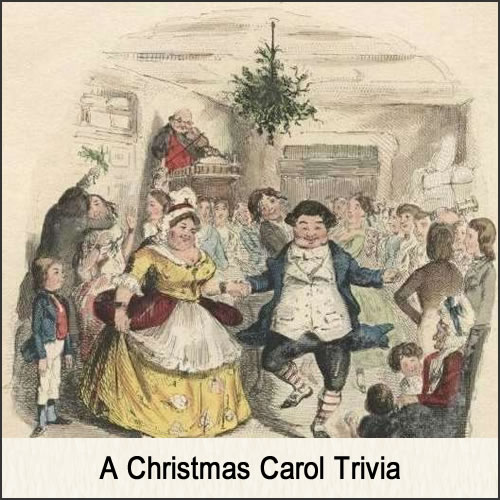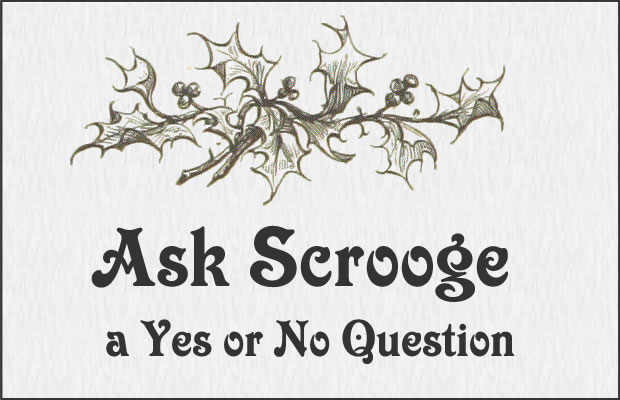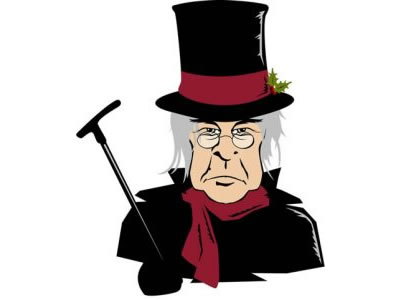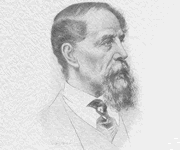A Christmas Carol, probably the most popular piece of fiction that Charles Dickens ever wrote, was published in 1843.
Learn About A Christmas Carol by Charles Dickens
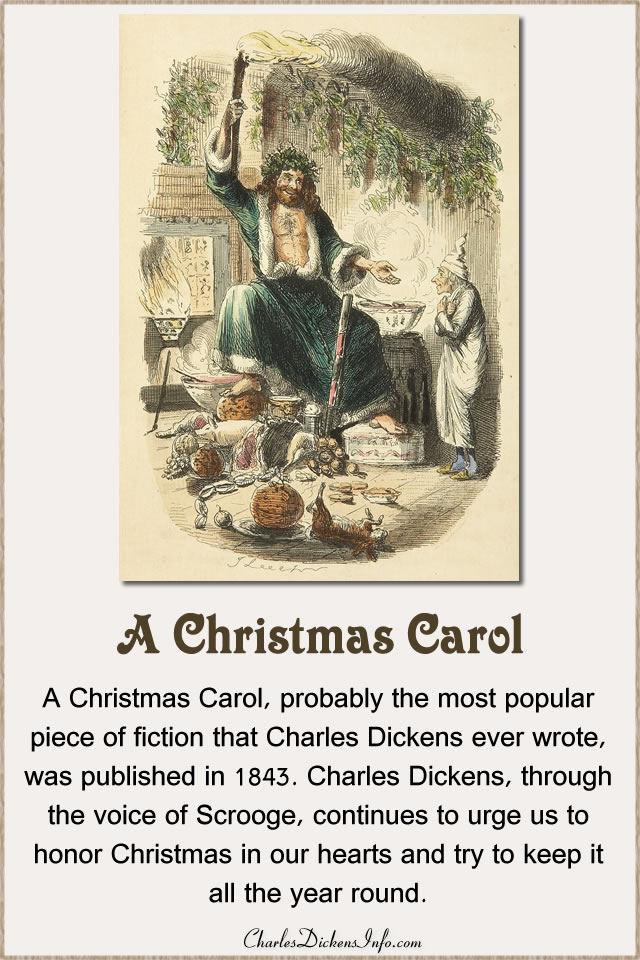
Last Updated on November 28, 2024 – Originally published July 5, 2012
A Christmas Carol, probably the most popular piece of fiction that Charles Dickens ever wrote, was published in 1843.
The publisher was Chapman & Hall (although Dickens paid the publishing costs) and the illustrator was John Leech.
Table of Contents
Dickens’s Life When Writing A Christmas Carol
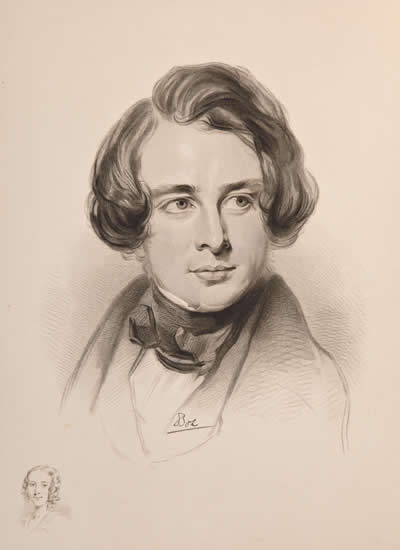
Sketch of Charles Dickens in 1842 (Small image on the bottom left is his sister, Fanny)
In 1842 Charles and his wife, Catherine, traveled to America.
Late in 1842 or early in 1843 Dickens began work on Martin Chuzzlewit.
In September of 1843 Dickens and Clarkson Stanfield, a prominent marine painter, visited the Field Lane Ragged School.
Dickens began work on A Christmas Carol in October of 1843 and it was published on December 19, 1843.
On January 15, 1844 Francis Jeffery (Frank) Dickens, the third son of Charles Dickens, was born.
Publication and Popularity
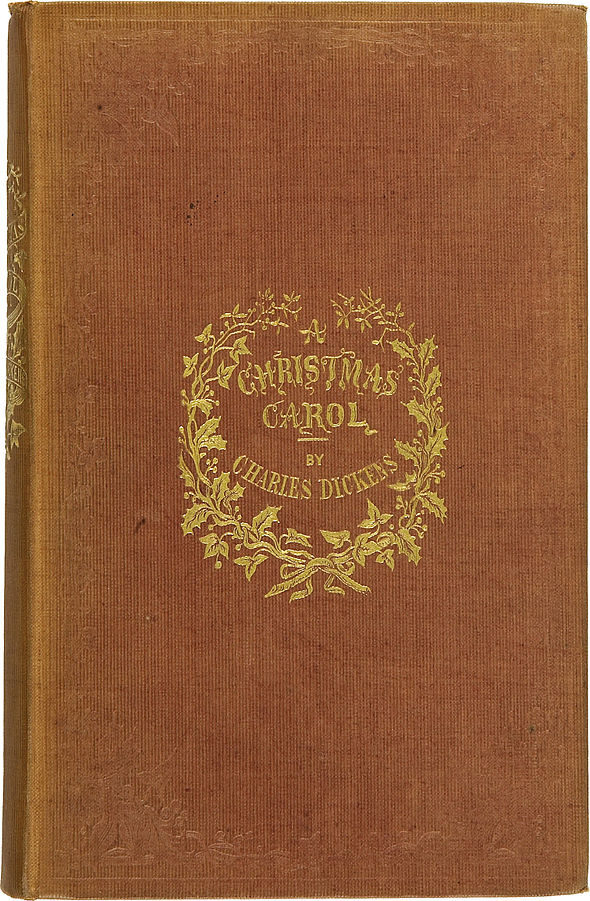
Cover of the first edition from 1843
Technically speaking, A Christmas Carol was published by Chapman & Hall. However, in an interesting turn of events, Dickens paid the publishing costs himself.
Sales of Martin Chuzzlewit, also published by Chapman & Hall, had been much less than expected. The owners of the company began to lose faith in the marketability of Dickens’s work. As a result, they proposed that A Christmas Carol be issued in an inexpensive collection of Dickens’s works or possibly as part of a new magazine.
Dickens was adamant that A Christmas Carol be published as a high-quality, stand-alone book.
After a discussion between the parties, they came to an unusual agreement.
Dickens would fund the publication of A Christmas Carol. He would receive the profits. Chapman & Hall would be paid for the printing costs and receive a fixed commission on the number of copies sold.
Since Dickens was paying for the publishing of the book, he wanted the book done his way. There were issues with the color of the endpapers, the title page and the book binding.
A Christmas Carol was the most successful book of the 1843 holiday season. By Christmas it sold six thousand copies and it continued to be popular into the new year.
Sadly, A Christmas Carol wasn’t the moneymaker that Dickens hoped it would be. Sales were good, but the publication costs had been high.
The book is as popular today as it was over 175 years ago. Charles Dickens, through the voice of Scrooge, continues to urge us to honor Christmas in our hearts and try to keep it all the year round.
Ragged Schools
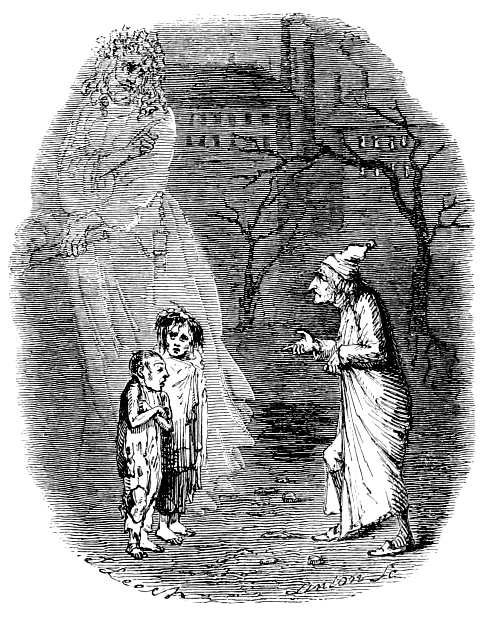
Illustration by John Leech, 1843
“This boy is Ignorance. This girl is Want.”
Dickens was involved in charities and social issues throughout his entire life. At the time that he wrote A Christmas Carol he was very concerned with impoverished children who turned to crime and delinquency in order to survive.
Dickens, as well as others, thought that education could provide a way to a better life for these children. The Ragged School movement put these ideas into action.
The schools provided free education for children in the inner-city. The movement got its name from the way the children attending the school were dressed. They often wore tattered or ragged clothing.
In September of 1843 Dickens visited the Field Lane Ragged School. In a letter to his friend, Miss Coutts, he described what he saw at the school:
I have very seldom seen, in all the strange and dreadful things I have seen in London and elsewhere anything so shocking as the dire neglect of soul and body exhibited in these children. And although I know; and am as sure as it is possible for one to be of anything which has not happened; that in the prodigious misery and ignorance of the swarming masses of mankind in England, the seeds of its certain ruin are sown.
The Five Staves of A Christmas Carol
A Christmas Carol is broken into five staves.
Collins Dictionary states that, “A stave is the five lines that music is written on.” Using the term staves instead of chapters stresses the link that A Christmas Carol has with the hopeful music of the holiday.
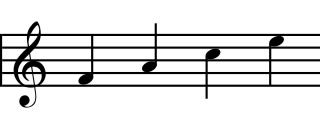
A Musical Staff or Stave
Stave One of A Christmas Carol
Stave one sets the scene of A Christmas Carol. We are introduced to Scrooge and Bob Cratchit. The ghost of Marley visits Scrooge and tells him about the three ghosts yet to come.
External heat and cold had little influence on Scrooge. No warmth could warm, no wintry weather chill him. No wind that blew was bitterer than he, no falling snow was more intent upon its purpose, no pelting rain less open to entreaty.
Stave Two of A Christmas Carol
Stave two of A Christmas Carol tells about the visit from the Ghost of Christmas Past.
We learn about Scrooge’s childhood and his sister Fan. We also learn about Scrooge’s fiancée Belle.
“It matters little,” she said, softly. “To you, very little. Another idol has displaced me; and if it can cheer and comfort you in time to come, as I would have tried to do, I have no just cause to grieve.”
Stave Three of A Christmas Carol
Stave three of A Christmas Carol tells about the visit from the Ghost of Christmas Present.
They visit the Cratchit family and Scrooge’s nephew. The Ghost of Christmas Present also opens Scrooge’s eyes to people near and far celebrating the holiday.
Again the Ghost sped on, above the black and heaving sea — on, on — until, being far away, as he told Scrooge, from any shore, they lighted on a ship. They stood beside the helmsman at the wheel, the look-out in the bow, the officers who had the watch; dark, ghostly figures in their several stations; but every man among them hummed a Christmas tune, or had a Christmas thought, or spoke below his breath to his companion of some bygone Christmas Day, with homeward hopes belonging to it. And every man on board, waking or sleeping, good or bad, had had a kinder word for another on that day than on any day in the year; and had shared to some extent in its festivities; and had remembered those he cared for at a distance, and had known that they delighted to remember him.
Stave Four of A Christmas Carol
Stave four of A Christmas Carol tells about the visit from the terrifying Ghost of Christmas Yet to Come.
“Men’s courses will foreshadow certain ends, to which, if persevered in, they must lead,” said Scrooge. “But if the courses be departed from, the ends will change. Say it is thus with what you show me!”
Stave Five of A Christmas Carol
Stave five of A Christmas Carol reveals the happy outcome of the ghostly visits. Scrooge is a changed man.
“A merry Christmas, Bob!” said Scrooge, with an earnestness that could not be mistaken, as he clapped him on the back. “A merrier Christmas, Bob, my good fellow, than I have given you for many a year! I’ll raise your salary, and endeavour to assist your struggling family, and we will discuss your affairs this very afternoon, over a Christmas bowl of smoking bishop, Bob! Make up the fires, and buy another coal-scuttle before you dot another i, Bob Cratchit.”
Themes of A Christmas Carol
Scrooge’s transformation is legendary. At the beginning of the story he’s a greedy, selfish person.
“Every idiot who goes about with ‘Merry Christmas’ on his lips, should be boiled with his own pudding, and buried with a stake of holly through his heart.” to the man who “knew how to keep Christmas well”
Scrooge is a miser who shows a decided lack of concern for the rest of mankind. However after a ghostly night, Scrooge sees life in a whole new way.
He became as good a friend, as good a master, and as good a man, as the good old city knew, or any other good old city, town, or borough, in the good old world.
Dickens seems to be reminding us of the importance in taking notice of the lives of those around us.
“It is required of every man,” the ghost returned, “that the spirit within him should walk abroad among his fellow-men, and travel far and wide; and, if that spirit goes not forth in life, it is condemned to do so after death.”
Dickens had this to say about A Christmas Carol:
I have endeavoured in this Ghostly little book, to raise the Ghost of an Idea, which shall not put my readers out of humour with themselves, with each other, with the season, or with me. May it haunt their houses pleasantly, and no one wish to lay it.
Their faithful Friend and Servant,
C. D.
December, 1843


